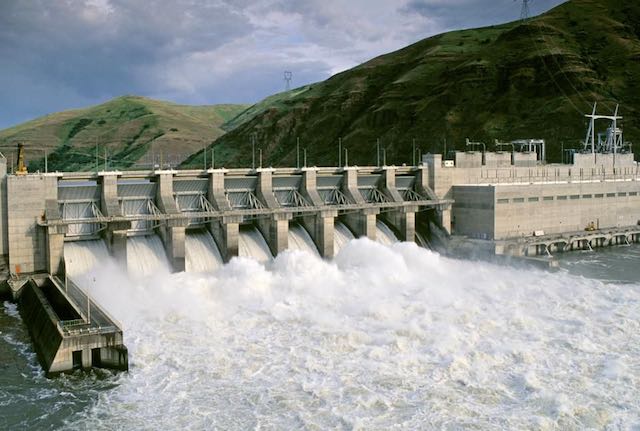forum
library
tutorial
contact

A Catch 22 is Ensnaring
Hydroelectricity and Salmon in The Northwest
by Ken Silverstein
Forbes, April 6, 2018
|
the film forum library tutorial contact |

|
A Catch 22 is Ensnaring
by Ken Silverstein
|
"These four dams are driving salmon and orca whales toward extinction," Heutte says.
"We support clean energy including clean energy from hydro. We are not on a mission to replace it -- only these particular dams."
 A Catch 22 is now ensnaring the Pacific Northwest. Indeed, the region's dependence on hydroelectricity is running into direct conflict with the survival of the salmon and orca whales. To resolve the matter, a clean energy advocacy group says that electricity from four regional dams must be replaced.
A Catch 22 is now ensnaring the Pacific Northwest. Indeed, the region's dependence on hydroelectricity is running into direct conflict with the survival of the salmon and orca whales. To resolve the matter, a clean energy advocacy group says that electricity from four regional dams must be replaced.
The NW Energy Coalition says that the dams, located in the lower Snake River, are a threat to sea life. That concern, supported by a host of organizations, has been affirmed by a federal court that ruled by 2020, the owners of the dams must consider all viable options when it comes to operating the system to better protect fish; the dams have contributed to the loss of 90% of the salmon population.
The court order said that the Bonneville Power Administration (BPA) and the Army Corps of Engineers need to consider dam removal as a potential option. In a study just released, the energy coalition says that wind, solar and geothermal energies could replace almost all of the hydro that would be closed and that it would result in little, if any, added greenhouse gas emissions -- a position with which the BPA has traditionally taken issue.
Further, "the cost of replacing of dams is small: just a couple percent and it would amount to a $1 a month for customers," Fred Heutte, senior policy analyst for the group said on a conference call this week with reporters. "Clean energy portfolios could replace the four dams," which not only includes traditional fuels sources but also untraditional sources such as demand side management to curtail energy usage during peak times. Moreover, no new natural gas would be needed, he says.
In the past, BPA has disagreed with closing existing dams and has instead relied on improving their performance and by taking steps to mitigate damages. In response to this latest study, the federal wholesaler of electricity says that it will take those findings into account before it reports back to the court.
Some context: The Columbia and Snake Rivers generate 40% of all U.S. hydropower and are responsible for generating more than 50% of the region's energy, says the Pacific Northwest Waterways Association. Hydropower also makes up 80% of the area's renewable portfolio and any excess it might have is exported to California. Cheap hydro is a huge boon to their economy.
The four dams that would be closed make up 4% of the area's electricity. The U.S region includes Washington, Oregon, Montana and Idaho.
But the chief argument against hydropower is that the damming of water can change the water flows and harm the creatures that live there. Meantime, a lot of construction is involved that can do further damage. Survival thus depends on the water levels and the ability to access to food, which if substantively altered could have adverse consequences for fish.
So, if these four dams could be shut down and replaced entirely with other clean energy sources, could activists not do the same for many other dams in the region and thereby save even more sea life?
Heutte said that the coalition is not advocating for such an outcome but that it does believe renewable energies could supplant much of the thermal sources -- coal and natural gas -- that now exist to generate electricity. But in this particular case, these four dams could be closed and replaced with low-cost alternatives that would save the fish population.
"These four dams are driving salmon and orca whales toward extinction," Heutte says. "We support clean energy including clean energy from hydro. We are not on a mission to replace it -- only these particular dams."
learn more on topics covered in the film
see the video
read the script
learn the songs
discussion forum
